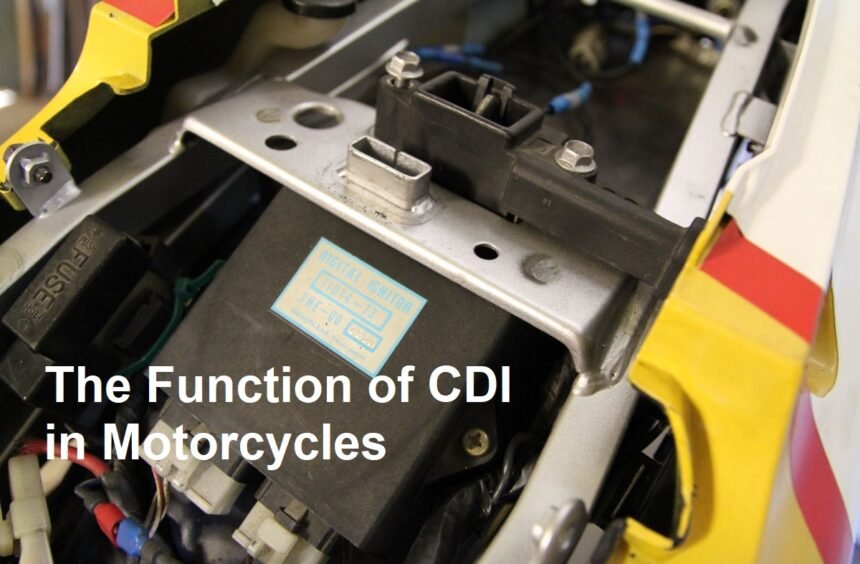Introducing
In the world of motorcycling, many components work together seamlessly to ensure a smooth and efficient ride. One such critical component is the CDI, or Capacitor Discharge Ignition system. Though it might sound technical, understanding the function of CDI in motorcycles is essential for enthusiasts, mechanics, and everyday riders alike. This article explores what CDI is, how it works, and why it is vital to the overall performance of a motorcycle.
What is CDI in Motorcycles?
CDI stands for Capacitor Discharge Ignition. It is an electronic ignition system that controls the timing and firing of the spark plug, which ignites the air-fuel mixture in the engine’s combustion chamber. The primary role of the CDI is to generate a high-voltage electrical spark at precisely the right moment, ensuring optimal combustion and engine efficiency.
This system is widely used in small engines, dirt bikes, scooters, and many motorcycle models because of its reliability, simplicity, and ability to provide a consistent spark timing. Unlike traditional points-based ignition systems, CDI systems are fully electronic, which means fewer moving parts and less maintenance.
How Does a CDI System Work?
The operation of the CDI system involves several key components working in harmony:
- Trigger Pickup or Sensor: Detects the position of the engine’s crankshaft or camshaft, signaling when the spark should fire.
- Control Module (CDI Unit): Processes signals from the trigger and determines the correct timing for the spark.
- Capacitor: Stores electrical energy and discharges it rapidly when needed.
- Ignition Coil: Converts the low voltage from the capacitor into a high-voltage current necessary for creating a spark.
- Spark Plug: Produces the actual spark that ignites the compressed air-fuel mixture.
Here’s a simplified explanation of the process:
- Engine Rotation: As the engine turns, the trigger pickup detects the position of the crankshaft.
- Signal Processing: The CDI control module receives this signal and decides the exact moment to send a spark.
- Charge Storage: The capacitor charges up with electrical energy.
- Discharge and Spark Generation: At the right time, the capacitor discharges rapidly through the ignition coil, creating a high-voltage pulse.
- Spark Ignition: The high-voltage current jumps across the gap in the spark plug, igniting the mixture.
This precise timing allows the engine to run efficiently, producing maximum power with minimal emissions.
Importance of CDI in Motorcycle Performance
The CDI system plays a crucial role in the overall performance of a motorcycle. Here are some reasons why:
1. Reliable Ignition Timing
The CDI provides fast and accurate ignition timing, which is essential for the engine’s smooth operation. Correct timing ensures that the spark ignites the fuel-air mixture at the optimal moment, leading to better acceleration, fuel efficiency, and power output.
2. Enhanced Engine Starting
Because of its reliable spark generation, CDI systems make it easier to start the motorcycle, especially in cold conditions or for engines that require precise timing for smooth startups.
3. Increased Power and Efficiency
Optimal ignition timing helps the engine run more efficiently, delivering more power while consuming less fuel. This not only saves costs but also reduces emissions, making the bike more environmentally friendly.
4. Durability and Low Maintenance
Compared to traditional points-based systems, CDI units are more durable and require less maintenance. Their solid-state design means fewer parts that can wear out or require adjustment.
5. Supporting High-Performance Modifications
Many high-performance motorcycles or those used in racing rely heavily on the CDI system to tune ignition timing for maximum power and responsiveness.
Common Problems and Troubleshooting
Although reliable, CDI systems can sometimes malfunction due to various reasons:
- Faulty Trigger Pickup or Sensor: Leads to incorrect timing or no spark.
- Damaged Capacitor or Control Module: Results in weak or no spark.
- Wiring Issues: Loose or corroded connections can disrupt the signal flow.
- Ignition Coil Failure: Reduces spark voltage, affecting engine performance.
In cases of misfiring, difficulty starting, or poor engine performance, checking the CDI system and related components is a recommended troubleshooting step.
Conclusion
The CDI (Capacitor Discharge Ignition) system is an essential part of modern motorcycle engines. It ensures precise ignition timing, enhances engine performance, and offers reliable spark generation under various conditions. By efficiently controlling when the spark occurs, CDI plays a vital role in powering your motorcycle smoothly and reliably. Understanding how this system works can help riders appreciate the complexities behind their favorite machines and ensure proper maintenance for a long-lasting, high-performing engine.












